Entryway mudroom ideas – how to get the boot room look in even the smallest of spaces
These entryway mudroom ideas help keep the mess of the great outdoors from intruding into your home. Here's how to make them work


Have you ever considered creating an entryway mudroom? The entryway is a part of the home with plenty of design potential but often gets overlooked as a small part of the home that primarily functions as a transitional space for movement between the inside and outside. But with these entryway mudroom ideas, you can take the space from a meager entrance, and give it a cozy countryside look of a beckoning boot room.
No matter how big or small your entranceway is, there are simple design hacks, pieces of furniture you can add, and subtle style entryway ideas to make this part of the home warm and hospitable, with the welcoming feel of a mudroom.
8 entryway mudroom ideas to try
Typically, mudrooms are designated places in the home where guests can remove muddy boots, take off and hang coats, bags, and generally remove any outside attire to get cozy. There is a strong association between the countryside and mudrooms, so they tend to have a rural feel - with natural materials and rustic exposed wood.
Read on to discover how to achieve this feel in your own entryway.
1. Include tasteful storage solutions
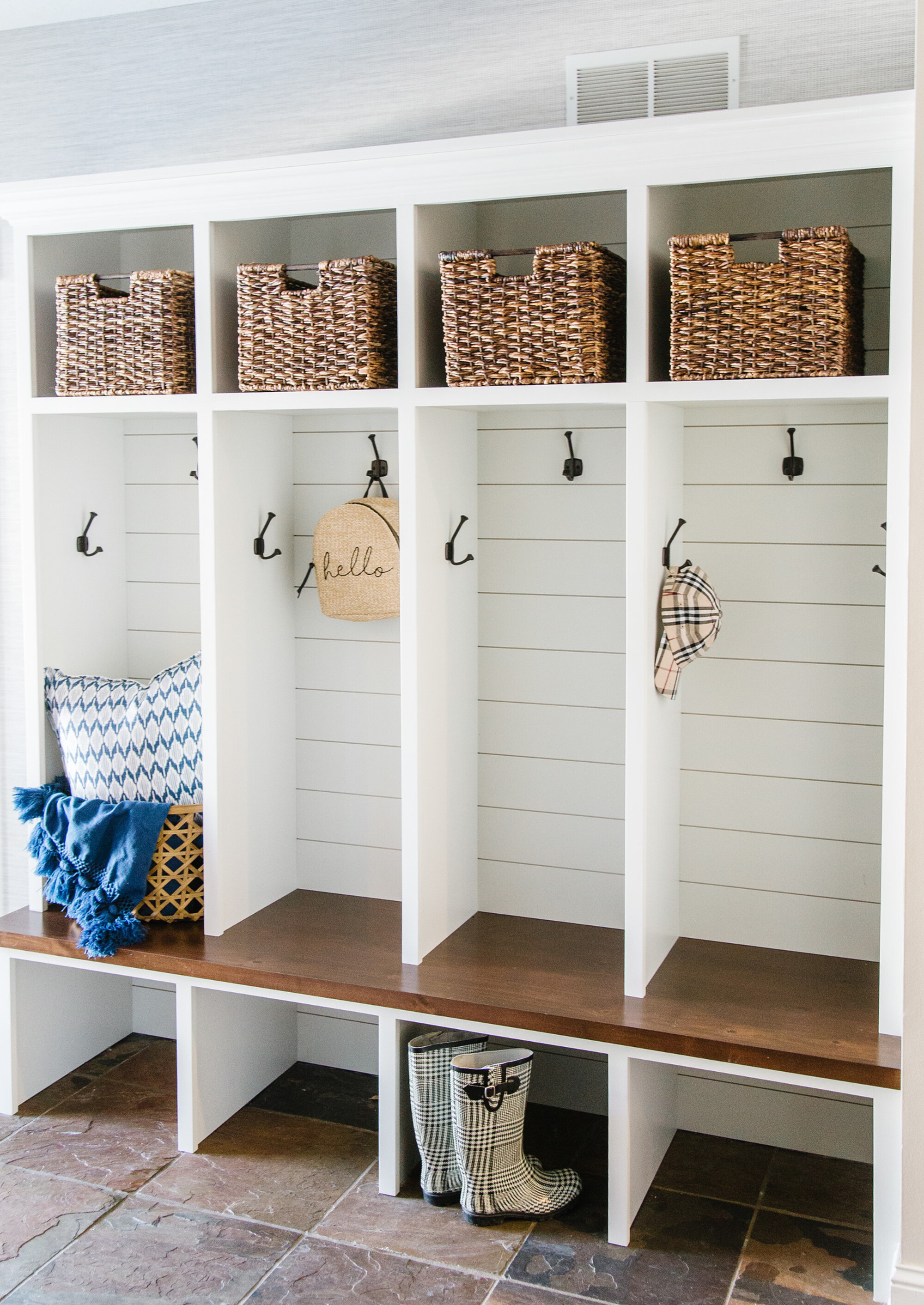
Get imaginative with your hallway storage ideas and turn something that is an entryway necessity into a look. Cubby holes really give off that mudroom aesthetic - individual areas for each person to store their personal items of outerwear. Baskets are another simple storage addition to your hallway space that are a key mudroom accessory. Not only do they give a country feel, often made out of wicker, they are great pieces for storing miscellaneous bits and bobs.
'Organization and maximum storage are almost always on our client's list of requests, especially common for rooms like a mudroom entryway,' explains Anna Leferink of Interior Impressions.
'We have cubbies with hooks for grab and go storage of everyday items and most importantly keeping coats, rain jackets and kid's gear off of the floor.'
The Livingetc newsletters are your inside source for what’s shaping interiors now - and what’s next. Discover trend forecasts, smart style ideas, and curated shopping inspiration that brings design to life. Subscribe today and stay ahead of the curve.
2. Add a wooden bench
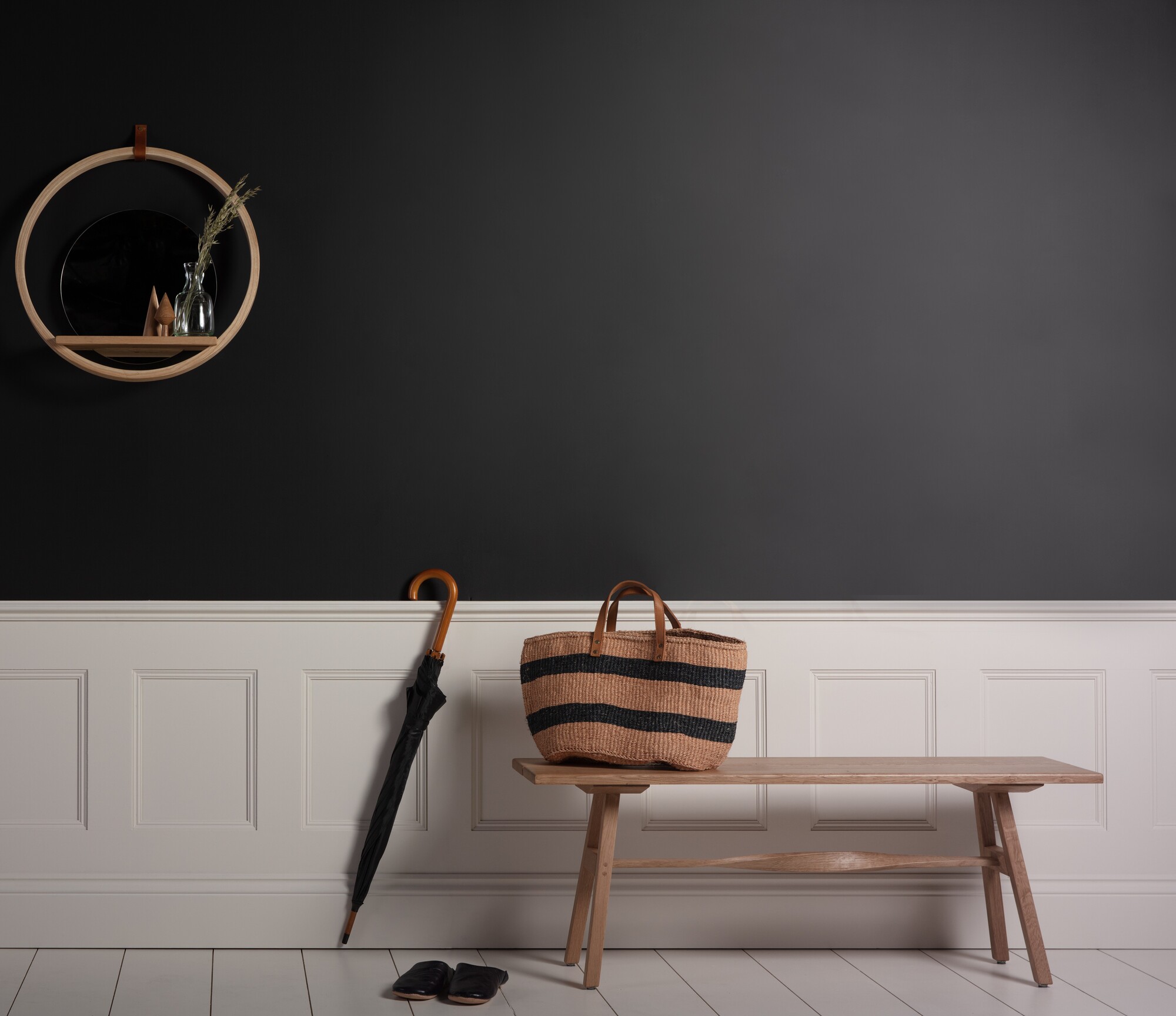
A bench is a mudroom staple, and even if you have a narrow entryway, the simple addition of a bench can go a long way to give the mudroom look you're after. 'Create a mudroom feel in a small hallway space by grouping a couple of key pieces including a wooden bench,' says furniture maker, Tom Raffield, who designed this beautifully crafted, simple yet elegant crib bench. 'Opting to add a wooden bench to a hallway instantly connotes imagery of pulling on and off welly boots on rainy days, giving a relaxed and lived-in country aesthetic to your space.'
A hallway bench can be used as a place to tie laces, to display grab and go everyday essentials in decorative bowls, or to store bags and accessories both on and underneath. Often, these benches are worth investing properly in, insists Tom. 'Choosing timeless, wooden designs and accessories that will last a lifetime will make the hallway a pleasant space to stop and sit while putting on or removing outerwear garments.'
3. Think about the color palette
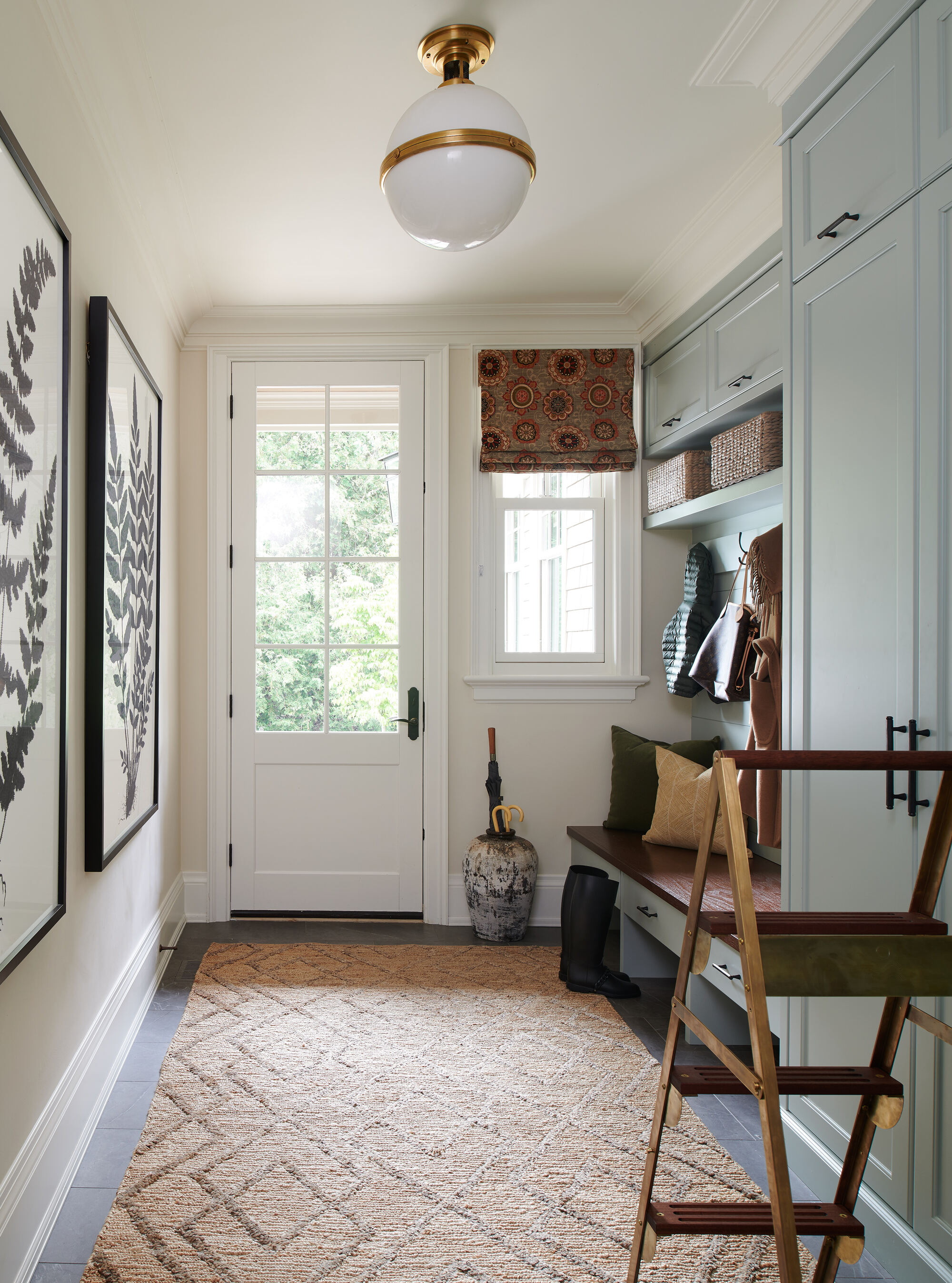
You can hint at the countryside aesthetic by carefully considering your color choices for hallway paint. This entryway mudroom designed by Toronto-based Hali Interiors has a beautiful color scheme featuring dusky light blue, a verdant green, creams and browns. The palette helps to create a cozy and calming feel, welcoming you indoors.
4. Create a mudroom nook
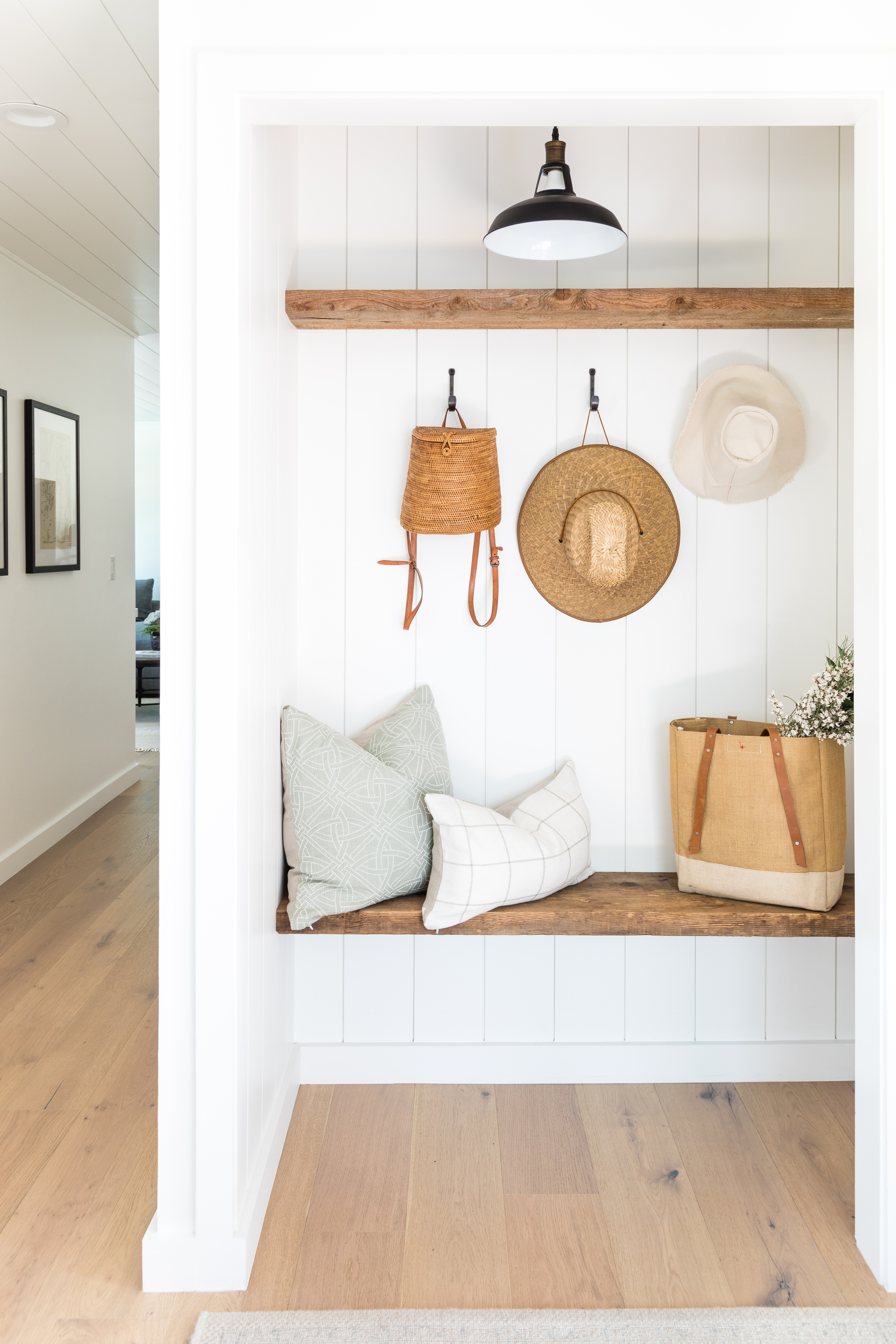
Look out for an opportunity in your entryway to create a small mudroom nook, like this small space design by Pure Salt Interiors, who have seized the chance to create a small boot room style destination by focusing on storage, texture and material.
'We are big fans of mudrooms for their functionality and love to design them into homes, even when there is a smaller footprint,' say Aly Morfort and Leigh Lincoln of Pure Salt.
'Opting for a mudroom nook in an entry is a great way to maximize utility while embracing a design opportunity,' they add. 'Using warm materials like woods and textiles help bring this space into the fold of your overall home design, and adding special details like millwork and statement lighting can make a mudroom feel like a destination all on its own.'
Hooks are another mudroom essential and three tasteful hooks are a really simple addition to your mudroom design. Try not to overladen your hooks, and keep things simple with a couple of your favorite coats on display, the rest tidied away.
5. Use soft furnishings
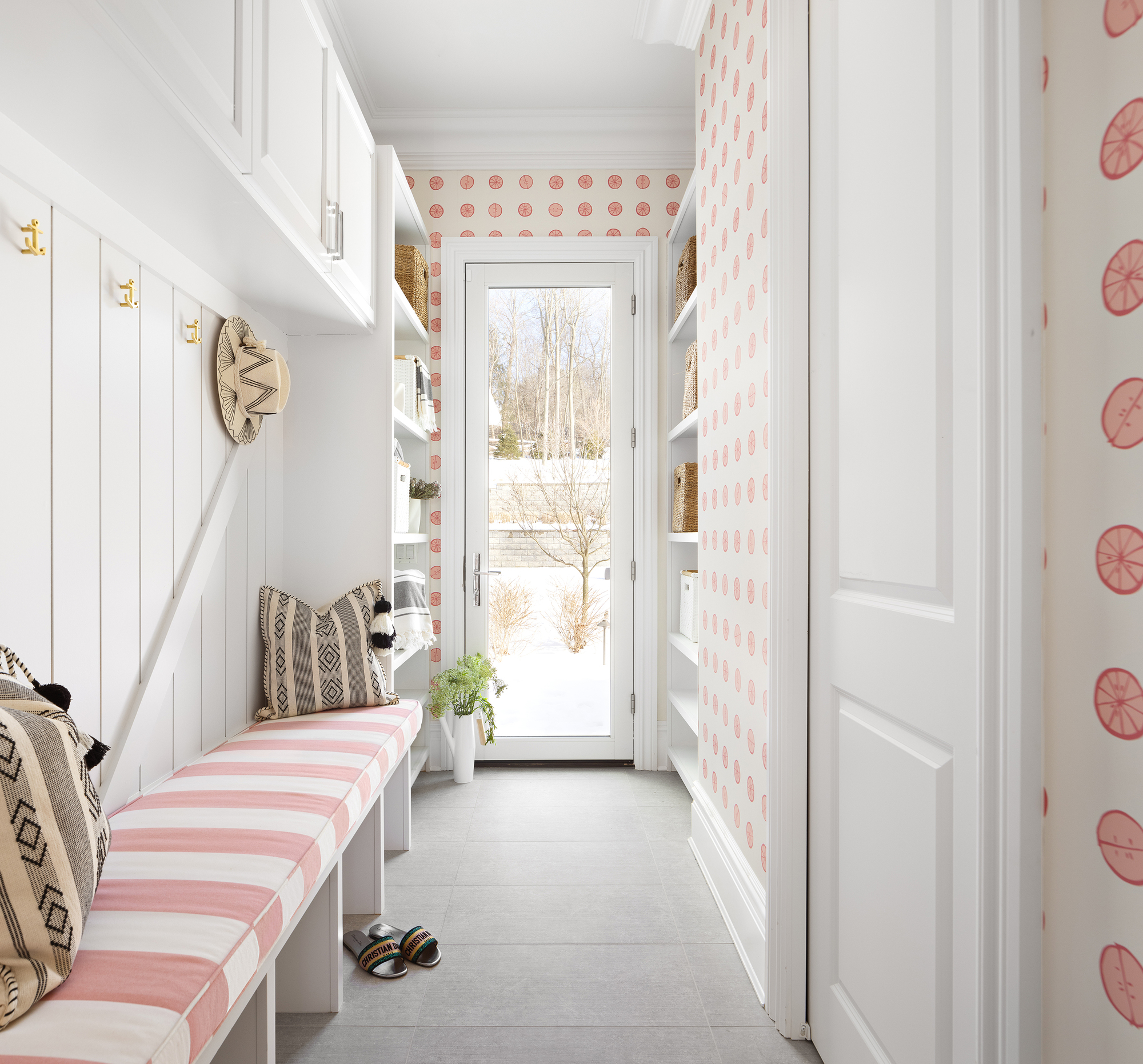
Create a feeling of comfort in your mudroom entryway and encourage those who pass through the area to take a seat and relax into the space. 'I always add an upholstered cushion on the bench. This is a great area to use a fun and patterned fabric,' says Abby Leigh of Abby Leigh Designs. 'In terms of fabric choice, something durable is key here,' she urges, and go for something soft in color that matches the countryside look and feel of the room.
'Throw a few pillows on to finish the seating area, this will really elevate the area out of the ordinary,' adds Abby. Don't forget that a built-in bench can also be a great source of entryway storage, too.
6. Build up with overhead storage
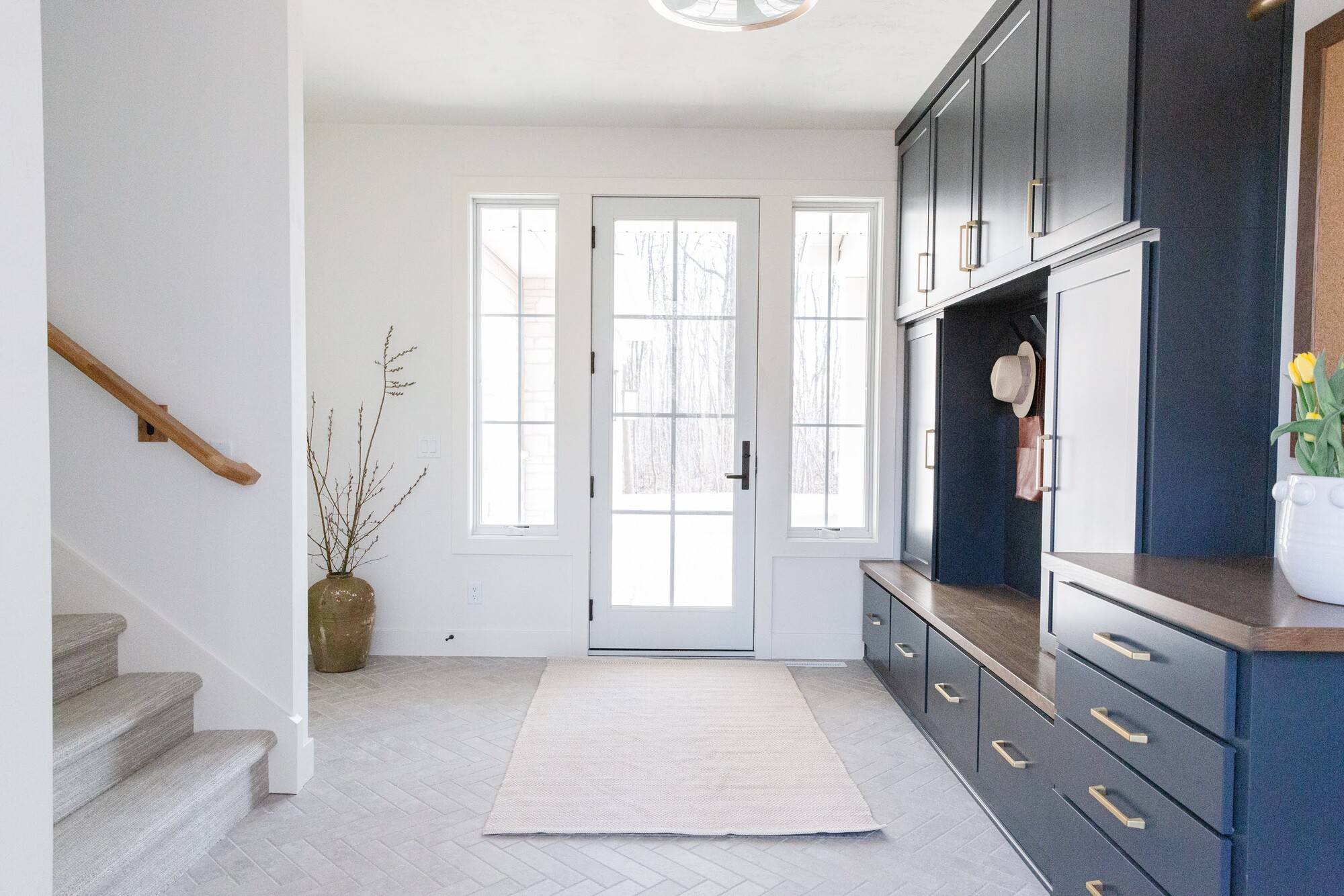
A built-in floor-to-ceiling piece of furniture is the ultimate in storage and hallway closet organization and is helpful for a high-traffic area like an entryway. This space was designed by Anna Franklin, Wisconsin-based interior designer and founder of Stone House Collective.
'Mudrooms are utility spaces, and we designed this mudroom to be durable enough to withstand wet boots, soccer cleats, paw prints and day-to-day-foot traffic. We wanted to bring an element of style and warmth through styling this space to feel both like a mudroom and an entryway,' explains Anna.
'Our priority was ensuring the mudroom space stays organized and clutter-free, so we added a ton of utility to the space.' The floor-to-ceiling cabinet is typical of mudrooms, and they are often highlighted by being painted in a dark color that contrasts against the wall. You have plenty of space here to squirrel away all your bits and bobs, keeping the passageway tidy and welcoming.
7. Think about the flooring
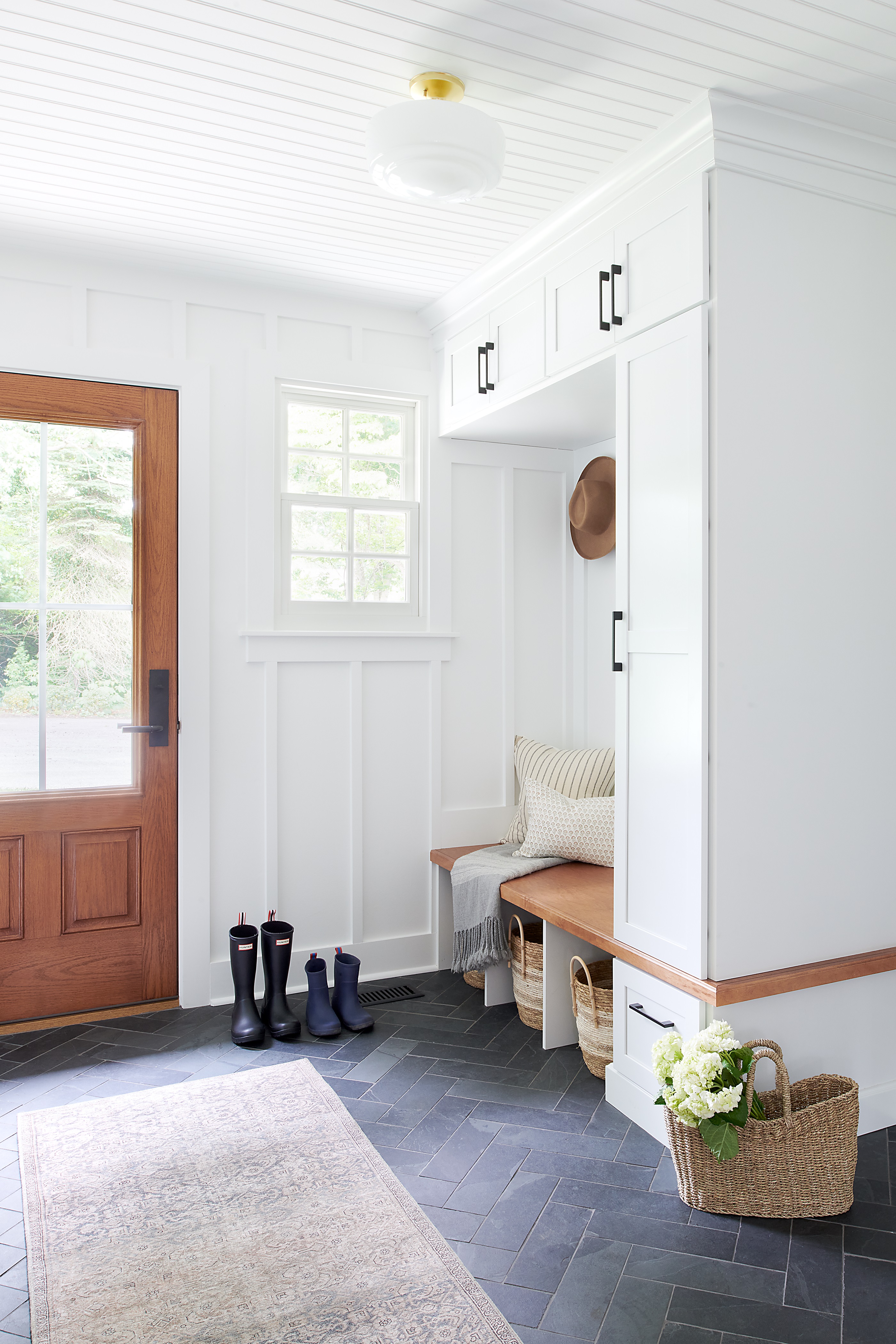
For a mudroom look, think about the hallway flooring. Traditional mudrooms have beautiful slabs of stone, natural wood or large tiles underfoot. These flooring options are beautiful as well as practical. They are durable, and easy to clean after getting trodden on by muddied wellies and dirty paws. Recreate this at home with grey stone tiles. A cozy, high pile rug is a nice final touch. This design is by Sharpe and Grey Interiors.
8. Accesorize with tasteful touches
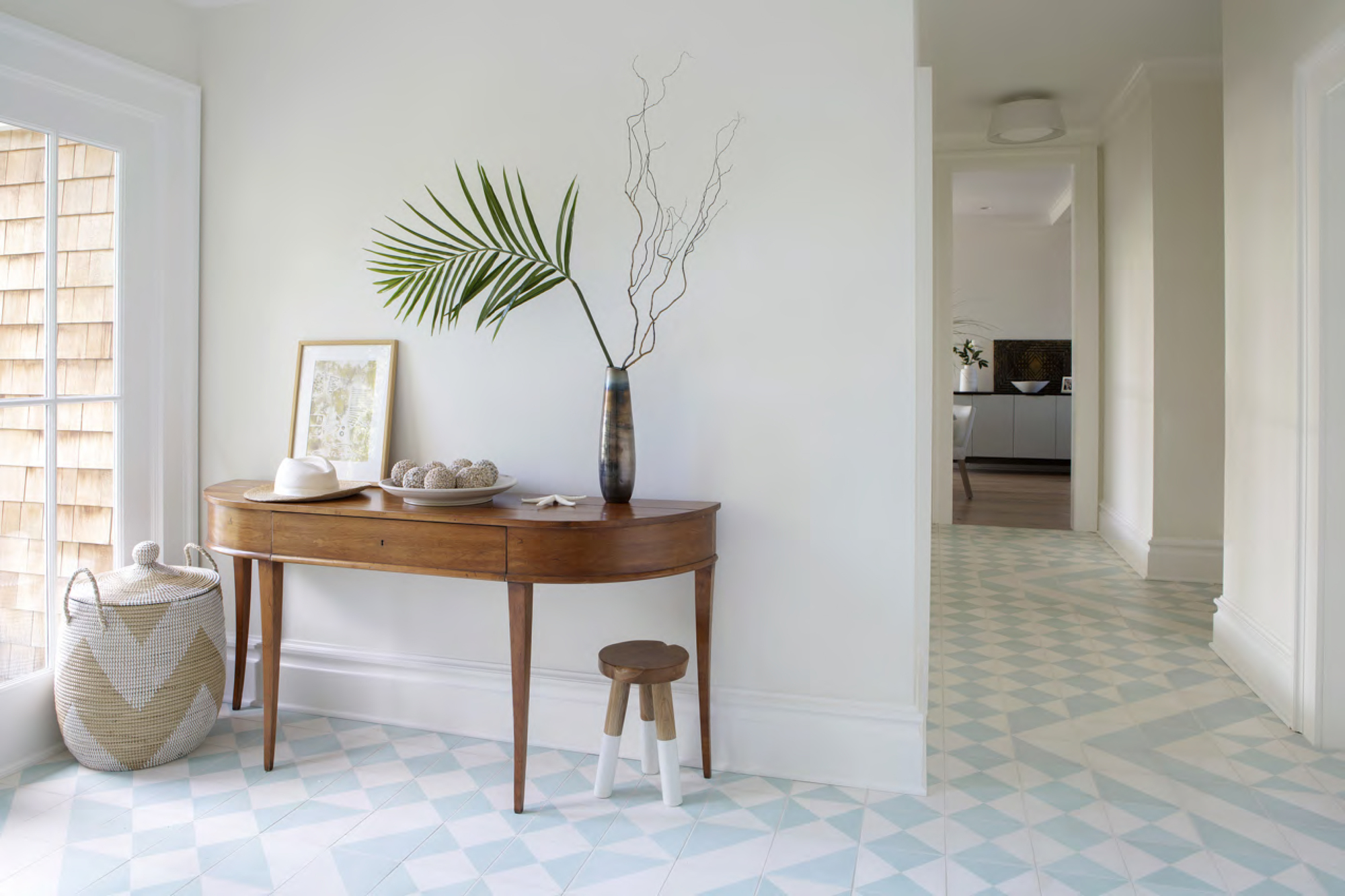
If you want to give the look and feel of a mudroom in just a couple of accessories and key pieces of furniture, think of design touches that ground the design and reflect the location - a nice subtle nod to the mudroom aesthetic in a hallway. In this Hamptons home designed by award-winning architecture and interiors firm, The Turett Collaborative, the entryway design plays homage to the mudroom idea with a basket, stool and use of woods and neutral tones, while the coastal entryway table decor put the home on the map and nod to the beach right outside the front door.
What is the best flooring for an entryway mudroom?
When it comes to the flooring used in your entryway or mudroom, wood is a great choice as it gives that rustic, authentic feel, while stone is a nice touch for giving that indoor outdoor feel. Lino can be great for getting rid of any muddy footprints.
Patterned tiles are also a great option. You can pick a fun pattern to add interest and they are again durable and easy to clean. Because of its thermal conductivity and good heat retention, tiling is good if you're going for a heated floor in your entryway mudroom. Pick from tiles such as porcelain or ceramic.

Former content editor at Livingetc.com, Oonagh is an expert at spotting the interior trends that are making waves in the design world. She has written a mix of everything from home tours to news, long-form features to design idea pieces, as well as having frequently been featured in the monthly print magazine. She is the go-to for design advice in the home. Previously, she worked on a London property title, producing long-read interiors features, style pages and conducting interviews with a range of famous faces from the UK interiors scene, from Kit Kemp to Robert Kime. In doing so, she has developed a keen interest in London's historical architecture and the city's distinct tastemakers paving the way in the world of interiors.